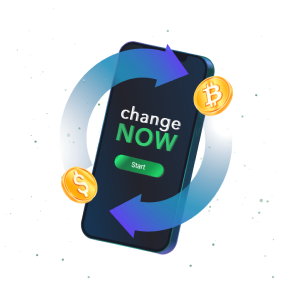Head to https://changenow.io. Choose ADA as the token you want to buy and select the fiat currency to pay for it.
Enter the wallet address where you will receive your ADA.
Confirm the details of the transaction.
Choose a payment gateway and enter your credit card details to pay for it.
Once the payment is confirmed, you will receive ADA in your specified wallet within 10 minutes.
Buy Cardano (ADA) with Credit Card or Debit Card Instantly
Do you want to buy Cardano (ADA) instantly using your credit or debit card? You have arrived at the right place.
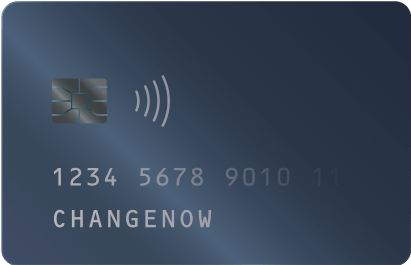
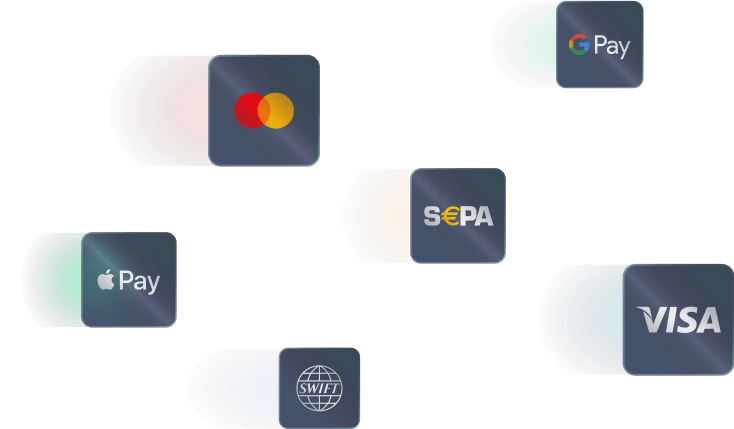






And more accepted here
Cardano (ADA) Price Chart
Market stats
Price of ADA in USD
Cardano currently trades at roughly 0.34 and has -1.18% over the past seven days. There are currently about 15372149716 Cardano tokens in circulation.
- Today’s Price$ 0.34
- Change
-4.17%
- 24h High$ 0.36
- 24h Low$ 0.34
Why Buy Cardano (ADA)?
Looking for a scientifically-driven blockchain? Cardano, or ADA, was developed using research-driven methods to create a blockchain for long-term growth. Here are some reasons why we love Cardano:
Proof-of-Stake Security:
Cardano's Ouroboros protocol is an energy-efficient and secure alternative to proof of work that vastly improves the sustainability of this network.
Peer-Reviewed Development:
The development of Cardano is a result of academic research, making the blockchain one of the most heavily developed.
Providing Scalability for Future Growth:
Cardona was designed to scale. This means that as more and more people start using it, the system does not get clogged up.
Diverse Use Cases:
From DeFi up to NFTs-Cardano allows multiple uses, thus being flexible for both developers and users.
How to Buy ADA with a Credit or Debit Card
Learn moreСhoose Buy/Sell Crypto
Choose the fiat currency and enter the amount.
Enter Your Details
Select Cardano and enter your credit or debit card details.
Complete the Purchase
Preview your transaction details and confirm the purchase.
About ADA
Cardano is a blockchain platform that facilitates the creation of dApps and tokens, and can also be used for peer-to-peer transactions. It was launched in 2015 by a company named Input-Output Hong Kong (IOHK) and aimed to resolve the blockchain trilemma: scalability, interoperability, and sustainability.
Cardano project was initially issued by Charles Hoskinson, the co-founder of Ethereum. He was the one to realized, that the Proof-of-Work algorithm, which underpins such blockchains as Bitcoin and Ethereum, possesses many restrictions and weak spots, like scalability and sustainability. That’s why the Cardano network uses the Ouroboros algorithm, based on the Proof-of-Stake protocol. The native coin of the Cardano blockchain is ADA. It can be used not only for transfer of value, as fiat, or any other cryptocurrency but also for staking — helping “stake pool operators” to verify transactions within the network and sign blocks.
In 2022, a proposal for the Vasil hard fork was submitted and is planned to be implemented in June. The Vasil protocol is expected to provide the Cardano network with cheaper transactions and a more adaptable network. Efficiency is also expected to be improved with the help of Plutus scripts.

Why Buy Cardano on ChangeNOW

Flexible KYC system
Our platform requires minimal personal information, allowing you to engage in cryptocurrency exchanges with ease, efficiency, and an emphasis on privacy. Some of the transactions don’t require any KYC at all.
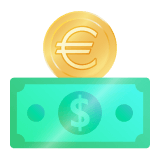
Top Security
ChangeNOW ensures a high level of security for all exchanges and data by using advanced encryption and multiple layers of security measures.
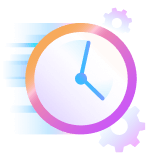
Fast Purchase
Benefit from rapid transaction processing on our advanced platform, enabling swift settlements and the acquisition of ADA tokens in as little as 4 minutes. Prioritizing efficiency, user satisfaction, and unparalleled speed in digital asset exchanges.
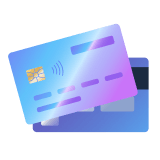
Multiple Gateways
Experience seamless purchasing Cardano, choosing a variety of secure payment gateways, accepting popular debit and credit cards, and the added convenience of SWIFT/SEPA bank transfers.
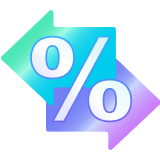
Low Transaction Fees
Experience the advantage of our user-friendly buy ADA platform, offering affordable transaction fees, diverse trading options, and a secure environment, all designed to optimize your digital asset investments.

Easy to Use
Discover seamless trading with ChangeNOW's intuitive interface, expertly designed for effortless navigation and user-friendly experience, empowering both new and seasoned investors to manage their crypto with ease. Buy Cardano in just a few clicks.
Price calculator
Before swapping coins, feel free to use our USD to ADA calculator to see how many ADA you’ll receive. Simply enter the required amount in USD, and let our USD to ADA converter determine the approximate exchange rate.
What Can You Do After You Buy Cardano (ADA)?
There are many things you can do after buying ADA. They include:
Lending
Swap
Hold
Payment
FAQ
The average transaction on ChangeNOW takes 5 minutes to settle. At most, expect to receive the tokens in your wallet within 10 minutes of payment.
Yes, it is safe because this exchange has advanced security features such as Secure Sockets Layer (SSL) encryption. We also don’t keep custody over users’ assets, so you retain full control.
Yes, you can buy ADA with a debit card on ChangeNOW. Just choose the payment gateway you want, enter the card details, and proceed with the payment.
Yes, you can use a prepaid card to acquire ADA the same way you would with a debit card. Select a gateway, enter the card details, and confirm the payment.
You can pay for Cardano or any other token using a bank transfer. However, this method may take longer than the others.
Yes, Apple Pay and Google Pay are among the payment gateways we support. They enable you to make payments instantly when downloading the iOS or Android mobile app for ChangeNOW.
You can buy it with over sixty fiat currencies, including the U.S. Dollar, Euros, British Pounds, Hong Kong dollars, etc.
1 ADA token currently trades for about $0.34, according to CoinMarketCap. The coin is -45.1718% year-to-date.
You can store it in offline cold storage or a digital wallet accessible online. The NOW wallet is a good example of a digital wallet to keep your tokens securely.
You can purchase at least $2 worth of ADA on this exchange. We may not be able to complete the transaction below that.
Buy ADA Instantly with ChangeNOW
ChangeNOW allows you to buy ADA instantly using your credit/debit card or another token.
Buy ADAOther Cryptocurrencies to Buy on ChangeNOW
ADA is not the only token you can purchase on ChangeNOW. Others include BTC, USDT, XRP, ADA, USDC, etc.





